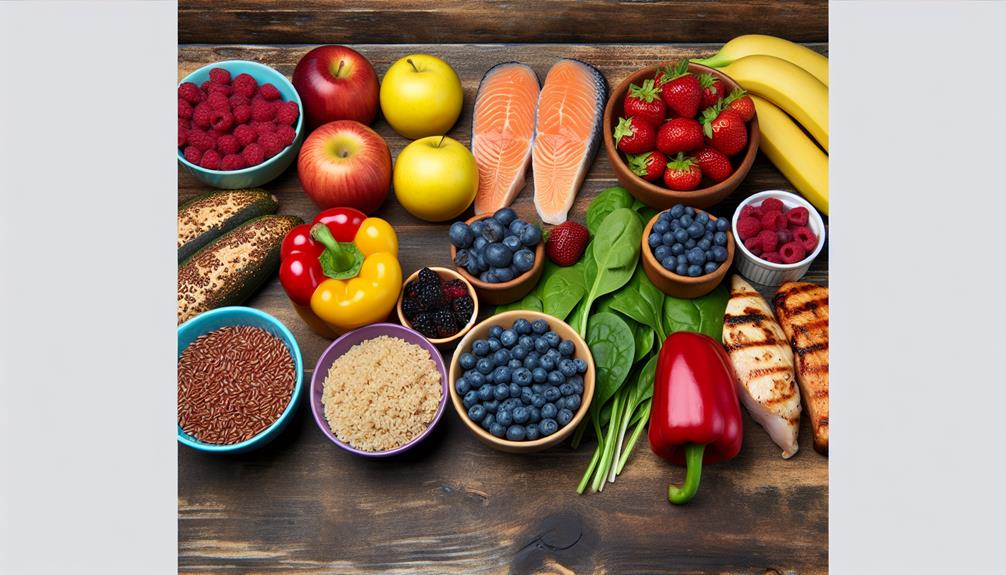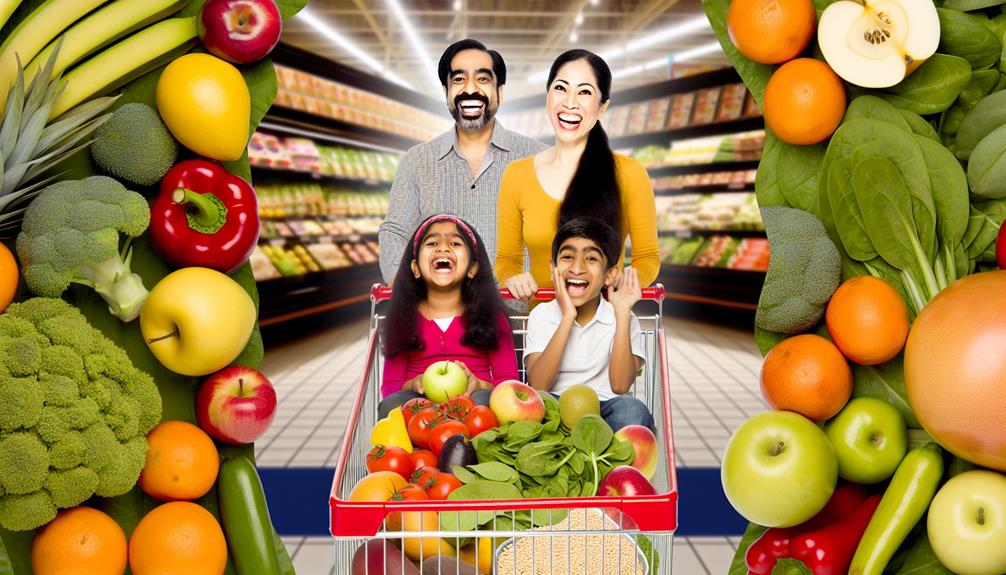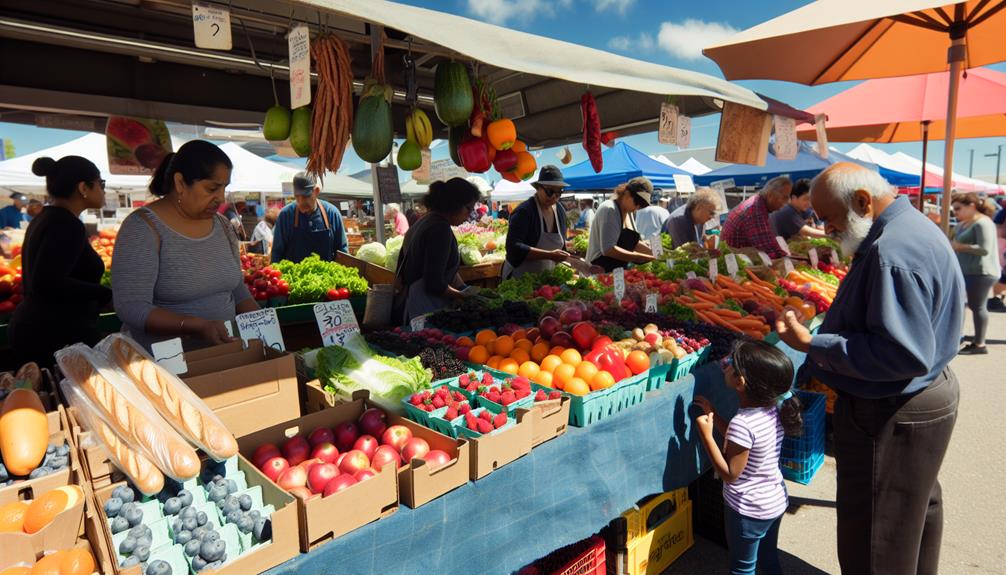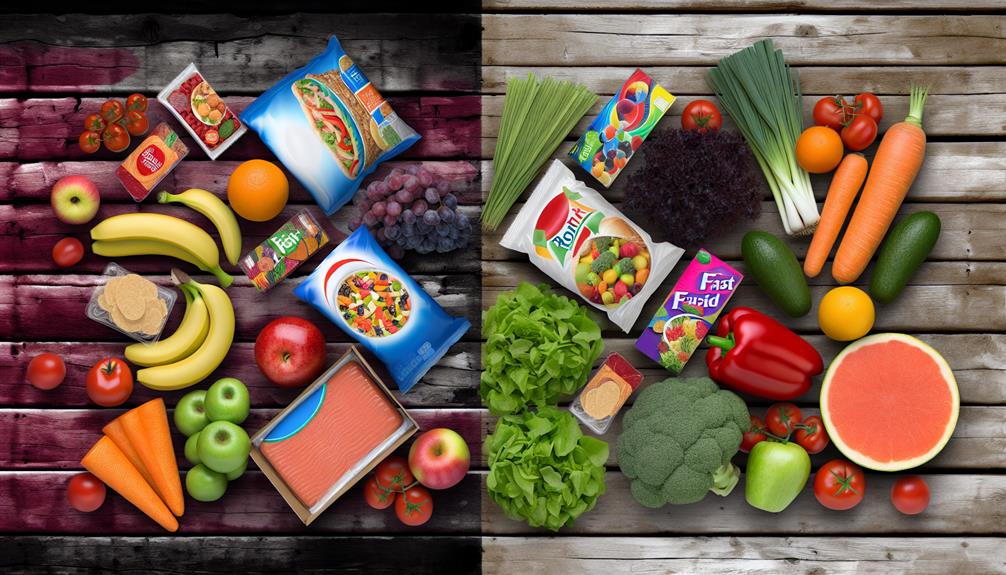The Healthy Options Allowance (HOA) is a government-sponsored initiative aimed at promoting healthier eating among eligible families by providing a monthly allowance for nutritious food purchases. To qualify, individuals must meet specific income and residency requirements, often supplemented by participation in programs like SNAP or Medicaid. The allowance covers high-nutritional items such as fresh fruits, vegetables, whole grains, lean proteins, and low-fat dairy products. Applicants must submit necessary documentation, including proof of identity and income. Understanding how to maximize this allowance can further enhance benefits, leading to better nutritional choices and community health improvements. More insights await about optimizing this program.
Key Takeaways
- The Healthy Options Allowance provides a monthly allowance for eligible individuals to purchase nutritious food items, addressing food insecurity and promoting healthier diets.
- Eligibility requires income verification, residency in the applicable region, and enrollment in assistance programs like SNAP or Medicaid.
- Eligible food items include fresh fruits, vegetables, whole grains, lean proteins, and low-fat dairy products that support a balanced diet.
- Applicants must submit proof of identity, income verification, residency documentation, and a completed application form through designated channels.
- To maximize benefits, effective meal planning, budgeting strategies, and utilizing local resources can enhance the purchasing power of the allowance.
Overview of Healthy Options Allowance

The Healthy Options Allowance (HOA) frequently serves as an essential initiative aimed at promoting better nutritional choices among eligible individuals and families. This program provides participants with a monthly allowance that can be used to purchase healthy food options, thereby directly addressing food insecurity and encouraging healthier eating habits. By fostering a supportive environment for healthy eating, the HOA not only improves individual well-being but also contributes to the overall health of the community, similar to strategies for healing and coping with life's challenges like grief navigating emotional challenges. The program benefits extend beyond individual health, fostering communal well-being through improved dietary practices.
Funding sources for the HOA typically include government allocations and grants from various public health organizations. These financial resources guarantee the sustainability of the program while allowing for flexibility in its implementation to meet the diverse needs of different communities. The HOA is designed not only to alleviate immediate nutritional deficiencies but also to empower participants through education on healthy eating and food preparation.
Eligibility Requirements
Individuals seeking to participate in the Healthy Options Allowance (HOA) must meet specific eligibility criteria designed to guarantee that resources are directed to those most in need. The program aims to support individuals and families facing food insecurity, making certain that assistance reaches the right demographics. During times of change, such as job loss, maintaining access to essential resources becomes even more important for emotional well-being and stability, especially as individuals navigate their unique challenges navigating emotional challenges.
To qualify for the HOA, applicants typically need to fulfill the following requirements:
- Income Verification: Demonstrating a household income that aligns with the program's guidelines.
- Residency: Being a resident of the state or region offering the HOA.
- Age Criteria: Meeting any age requirements specified by the program.
- Enrollment in Other Assistance Programs: Participation in programs such as SNAP or Medicaid may be required.
- Completion of the Application Process: Submitting a completed application with necessary documentation.
Navigating the application process can be straightforward, yet it may require thorough documentation, particularly for income verification. By adhering to these criteria, individuals can make sure they are considered for this essential assistance, fostering a sense of belonging and support within their communities.
Eligible Food Items

Under the Healthy Options Allowance (HOA), a variety of food items are deemed eligible to guarantee that participants can access nutritious options essential for maintaining health. The program emphasizes items with high nutritional value, ensuring that beneficiaries can make choices that support their well-being and dietary needs. Chronic stress has been shown to negatively impact immune function, making it even more important for individuals to prioritize their nutrition during challenging times, as how stress weakens your immune system can lead to increased health risks.
Eligible food categories include fresh fruits and vegetables, whole grains, lean proteins, and dairy products. These categories are carefully selected based on their ability to provide essential nutrients, thereby fostering a balanced diet. For instance, fresh produce not only offers vitamins and minerals but also contributes to overall dietary fiber intake. Whole grains, such as brown rice and whole wheat bread, are recognized for their ability to sustain energy levels while promoting heart health.
Additionally, lean proteins, including poultry, fish, and legumes, are encouraged for their role in muscle maintenance and repair. Dairy products, preferably low-fat options, provide calcium and vitamin D, critical for bone health. By focusing on these eligible food items, the HOA aims to empower individuals and families to make informed dietary choices that enhance their overall quality of life.
How to Apply
Applying for the Healthy Options Allowance (HOA) involves a straightforward process designed to guarantee accessibility for eligible participants. This application process is structured to be user-friendly, making certain that individuals can easily acquire the necessary benefits to support their nutritional needs. Additionally, many retirees seek flexible roles that allow them to manage their time effectively, making this allowance a valuable resource for maintaining a healthy lifestyle while pursuing other interests like stress-free job opportunities.
To successfully navigate this process, applicants should prepare the following required documents:
- Proof of identity (e.g., driver's license or state ID)
- Verification of income (e.g., pay stubs or tax returns)
- Residency documentation (e.g., utility bill or lease agreement)
- Any relevant medical documentation (if applicable)
- Completed application form (available online or at local offices)
Once you have gathered these documents, you can submit your application through designated channels, such as online portals or in-person at community service offices. It is essential to make sure that all information provided is accurate and complete to avoid delays in processing.
Understanding the application process and preparing the required documents in advance can notably enhance your experience, facilitating a smoother shift to receiving the Healthy Options Allowance and fostering a sense of belonging within your community.
Tips for Maximizing Benefits

Once the application for the Healthy Options Allowance (HOA) has been successfully submitted, participants can take proactive steps to optimize their benefits. Effective meal planning is essential in maximizing the value of the HOA. By organizing meals around the allowances provided, individuals can guarantee they are purchasing nutritious foods that align with their dietary needs while minimizing waste. It's important to be mindful of processed foods, as many low-fat options may not be as healthy as they appear, often containing added sugars and preservatives that can undermine dietary goals. Choosing whole, unprocessed foods can lead to better health outcomes, especially if you avoid the risks of low-fat processed foods.
Incorporating budgeting strategies can further enhance the impact of the HOA. Participants should track their expenditures to identify areas where they can save, allowing for more flexibility in meal choices. Utilizing sales, coupons, and seasonal produce can stretch the allowance further, making it possible to include a wider variety of healthy foods.
Engaging with local community resources, such as food co-ops or farmers' markets, can also provide access to fresh, affordable options. Building connections with others who utilize the HOA can foster a supportive environment where tips and experiences are shared, strengthening the sense of belonging within this community. By implementing these strategies, participants can fully embrace the benefits of the Healthy Options Allowance, enhancing both their health and financial well-being.
Frequently Asked Questions
Can Healthy Options Allowance Be Used for Online Grocery Shopping?
The Healthy Options Allowance can indeed be utilized for online grocery shopping, provided that the purchases are made through eligible retailers. This feature enhances accessibility, allowing individuals to conveniently select nutritious options from their preferred online platforms. It is essential to verify that the retailer is approved to guarantee compliance with the guidelines. By embracing online shopping, beneficiaries can better manage their health and well-being while enjoying the convenience of modern purchasing methods.
Are There Restrictions on Brand Names for Eligible Food Items?
When considering restrictions on brand names for eligible food items, it is essential to note that specific eligible brands may be designated within various food categories. These restrictions often aim to guarantee nutritional value and affordability. Consequently, participants should familiarize themselves with the approved brands for each category to maximize their benefits. Engaging with the program's guidelines fosters a sense of community, as individuals share knowledge and resources that support healthier choices.
How Often Can I Reload My Healthy Options Allowance?
The reload frequency of your allowance is typically determined by the specific program guidelines, which may vary among providers. Generally, allowances are reloaded monthly, ensuring consistent access to benefits. This regularity supports the goal of promoting healthier food choices within the community. Understanding the specifics of your allowance benefits can enhance your ability to plan and utilize these resources effectively, ultimately contributing to improved well-being and a sense of belonging among participants.
What Happens if I Exceed My Allowance Limit?
Exceeding limits in any allowance system can lead to significant budget management challenges. When individuals surpass their set allowance, they may face penalties or restrictions that can impact their overall financial health. This situation necessitates a reevaluation of spending habits and prioritization of essential items. Additionally, it underscores the importance of adhering to established limits, fostering a sense of responsibility and belonging within a community that values financial discipline and collective well-being.
Can I Share My Healthy Options Allowance With Family Members?
The ability to share benefits within a program often hinges on specific sharing guidelines and family eligibility criteria. Generally, allowances are intended for individual use, limiting the capacity for sharing among family members. However, exceptions may exist depending on the program's regulations. It is essential to consult the specific guidelines to understand the framework for sharing and eligibility, ensuring compliance while maximizing the benefits available to individuals within the family unit.





